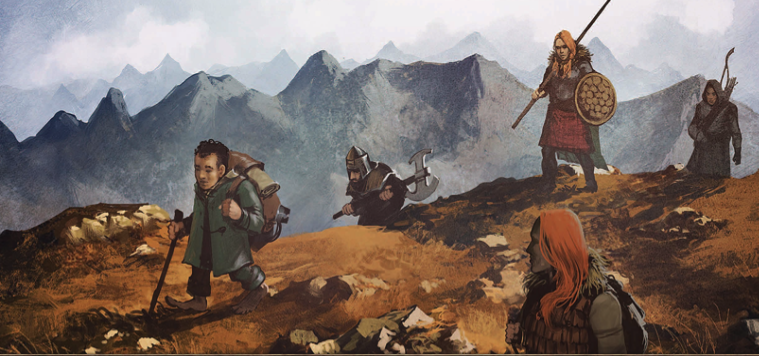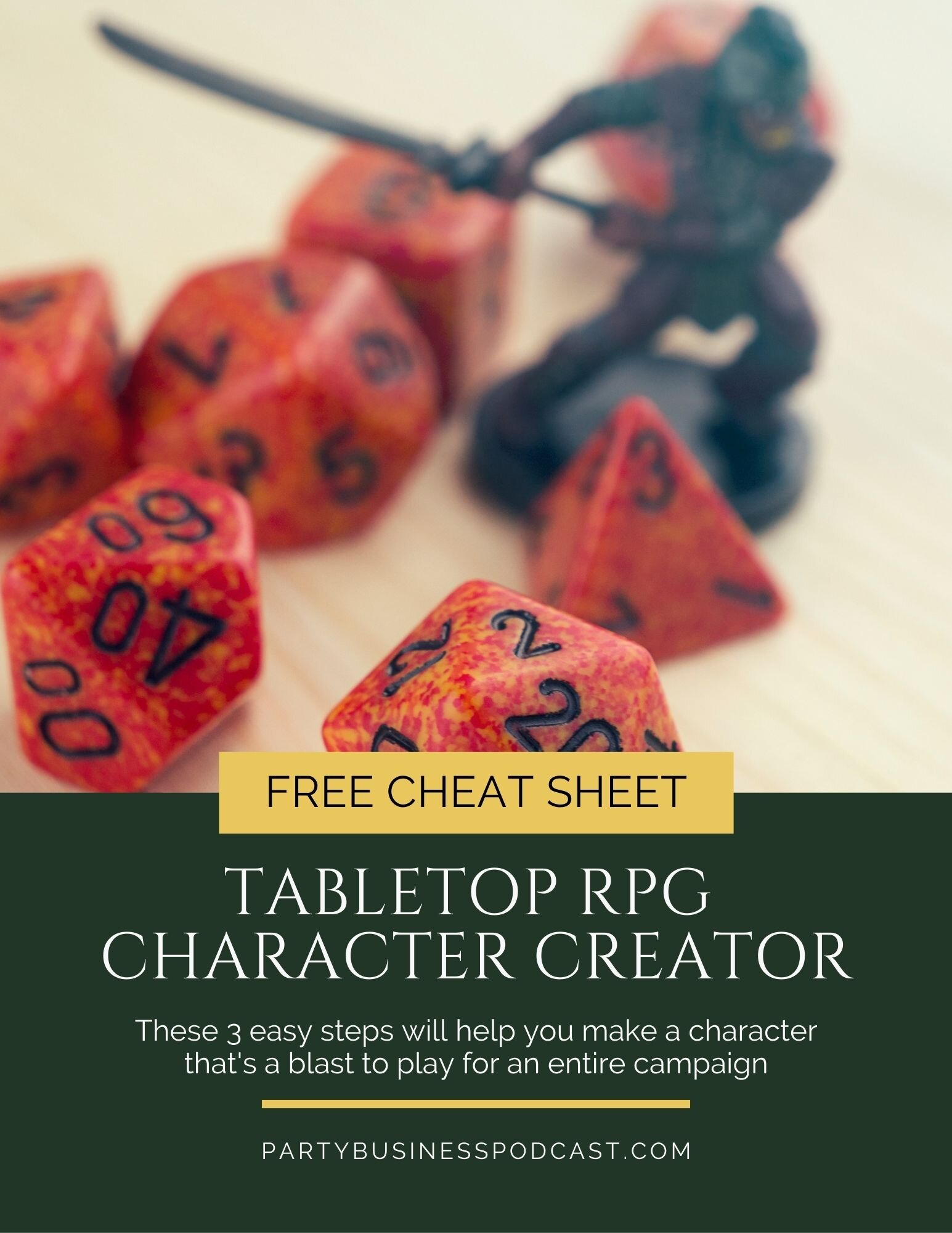Rollin’ in Middle Earth: The One Ring RPG Review
Credit: The One Ring RPG
“God, I just wish I could live in Middle Earth…”
How many times have you said that?
If you’re like me, pretty much every day.
I actively look for little Hobbit moments.
Drinking coffee with the sun coming through the windows…
Going on walks around my vibrant green neighborhood…
And most importantly: avoiding people that come knocking at the door.
And, if you’re like me, you’ve probably wished there was a super immersive video game that captured that feeling perfectly. (LOTRO exists, I know, and it’s awesome, but I want more, damn it!)
That’s where tabletop games come in. And honestly, it’s high time I tried (and you tried) The One Ring RPG because it’s the blend of things I already like: D&D and Lord of the Rings.
But, just because it’s a Lord of the Rings tabletop RPG doesn’t mean it’s exactly like D&D. It’s actually VERY different (and that’s a good thing.)
The One Ring RPG: The Middle Earth Setting
Credit: The One Ring RPG
What separates this game is the Middle Earth setting. Shocker, I know.
It’s every geek’s dream to be a part of the lore Tolkien started because he was bored grading papers. (Seriously, that’s how he came up with The Hobbit, look it up.)
It’s diving into the immersion of that world that makes it something special because, for a moment, your imagination becomes a part of the canon.
But what’s most fantastical is how...realistic it is. This is especially noticeable compared to the high fantasy magic setting of D&D.
Now, don’t get me wrong...one of the best things about D&D is a wizard suddenly bending over and summoning a unicorn out of his ass while shooting magic missiles from his fingertips. That’s what makes the game fun–the complete insanity.
Middle Earth, for being the fantasy setting to compare all fantasy settings to, isn’t very...magical. There are no healing spells to help players dig themselves out of the balrog pit they made for themselves, and they won’t be raining fire from the heavens on enemies anytime soon.
And at first glance, that seems like a bad thing.
But when you have to focus on the little details of how far you’re traveling with what gear and have to cross your fingers every time you roll the dice to see if the group gets tracked by wargs or something, you immerse yourself into the world like never before.
Granted, it’s unfair because immersing myself in Middle Earth is way easier than the Sword Coast, but still.
And this is coming from someone running the game, not even a player.
As a player, you have to get clever. Some polymorph spell isn’t going to change a mind flayer boss into a rat that is then controlled by one of the characters’ rat commanding magical items and forced into a furnace that makes the DM throw his notes across the room. Not, uh, speaking from experience or anything.
It’s the little choices that build over time to make a character feel real, and the player can truly connect with them.
Do I climb the wall and free the guy in a spider’s web, or do I chance the web itself if I can be sneaky?
Can I impress this Elf guard enough to convince him to give me a nicer room and also eavesdrop on some delicate conversations?
Should we keep to the river or wade through the marshes?
Choose wrong, and there are consequences.
And there’s nothing that makes you connect to a character faster than consequences.
Shadow Points – The Dark Side of The One Ring RPG
Credit: The One Ring RPG
In D&D, if you kill a shopkeeper and rob the place, your biggest concern is, “did anyone see that?”
In The One Ring RPG, if you kill an innocent shopkeeper, witnesses or not, that will cost a heavy toll on your character.
Shadow Points are earned as your character succumbs to the evil of the world either by murder-hobo choices or because they came face to face with some dark, unnamed thing in Middle Earth. Which is rare because Tolkien sure loved naming things.
If you get too many Shadow Points and it overcomes your character’s Hope Points, your character has a bout of madness. This is like Boromir desperately trying to steal the ring from Frodo–dude just failed his Wisdom Test.
This allows for a character arc. Something that’s really not in the mechanics of Dungeons and Dragons. Sure, there’s an alignment chart, but that’s not used the same way as Shadow Points are.
Here’s the thing...have too many bouts of madness, and your character is done. Not only can you die, which early on is pretty easy, but you can also simply experience too much darkness. You depress your way out of the game.
It makes you think about your next move as a player. There’s always a battle happening. You may be out of the fight with those spiders, but the evil lair you’re in is still draining you.
It accounts for the mental fatigue that adventuring would take. I like to think I would love to live in Middle Earth, but if I was with Frodo when Shelob took him...good luck, pal, it’s been real.
The players aren’t these demigods that can charge into any situation; they feel real. And because they feel real, you as a player immerse yourself even more.
The One Ring RPG is About the Journey...and Yeah, Also the Destination
Credit: The One Ring RPG
In Dungeons and Dragons, the setting is in the name. You are going to be in some dark, dank, mazelike places.
I’ve had some fantastic tales spin out of a good dungeon crawl...but typically, the journey to that ancient temple or mine or whatever isn’t fleshed out much.
There might be bad weather, or a group of goblins that jump into the firelight of your camp, but that’s just to get the dice rolling.
The journey in The One Ring RPG IS the adventure.
And that makes total sense.
The Lord of the Rings is all about the walking, walking, and more walking. The Hobbit spends very little time actually at the Lonely Mountian, which is the whole point of the journey. The things that happened on the way are what make the story fun.
That’s what the Journey mechanic tries to do in The One Ring RPG. Now, it’s not perfect and takes some finagling from the DM...uh LM. Loremaster is the Gamemaster term here.
Each player has a role while they get from one place to another. Maybe they are scouting ahead, hunting for food, or keeping a lookout around the fire, but they do something. If they fail their dice rolls, hazardous events start to happen.
With 1st edition, the math can kind of get overwhelming. Hopefully, the 2nd edition fixes that because they have the chance to make something special of the Journey function.
But a little imagination is really all that’s needed. The game map and roles the players find themselves in while they travel can help spark some ideas for the person running the game. And if there’s one thing a DM, GM, LM, whatever you want to call them loves, it’s making trouble for the players in immersive ways.
You can find out all the antics my group gets into in our podcast Party Business. In the first few episodes, all they need to do is help a merchant get across Mirkwood forest. Literally, it’s that simple. It took hours, and elves, spiders, weird hermits, and even darker things have made their way into the story.
Mostly, what happens with all that is based on the Journey rules. You still have that aspect of not knowing what will happen next.
And that’s the fun of tabletop RPGs.
You make a character you really want to immerse yourself in. Then you just want to see what’s around that next corner...and the next one...and maybe that one too.
And speaking of characters...
It’s About Roleplaying, Not Abilities in The One Ring RPG
Credit: The One Ring RPG
Coming from tabletop RPGs like D&D and Pathfinder, The One Ring can be a little shocking when you make your characters.
This is because your class, called Callings in The One Ring, has no real active abilities. There’s no barbarian rage, sneak attack, or minor illusion. So...what the hell?
Callings instead focus on traits that your character gets to choose from and favored common skills they lean on. It’s easier for your Wanderer to level up in travel, for instance, and that makes perfect sense.
Even your race, called Culture in The One Ring, doesn’t really give you any abilities either. You have a certain loadout of base skills you build from and can choose some more traits, but that’s it.
What’s going on here? Is this...fun?
Actually, it makes The One Ring Roleplaying Game...well, roleplaying. Your traits are a roleplaying mechanic for you to initiate as you will. The more you lean into your character’s traits, the more your character is going to accomplish.
Sure, that means you won’t have some insane magical ability to throw the DM off course, but you have more flexibility on how you can roleplay your way through even something like combat. It gives you the mechanics to roleplay right in the rules of the game.
Then you can throw the LM off course.
And once again, it makes it even easier to immerse yourself in Middle Earth.
This is why The Party Business Podcast crew is already having a blast recording episodes. We barely remember that we are making a show, that’s how sucked in we’re getting.
So if you want to have that same experience, we highly recommend finding a PDF online for The One Ring or getting 2nd edition when that’s available to everyone.
And I want to help you make better tabletop RPG characters and not take hours to do it. Have more fun, and build characters fast with our free character creator cheat sheet.
Get it right here and make characters that are fun to play through the entire campaign.






